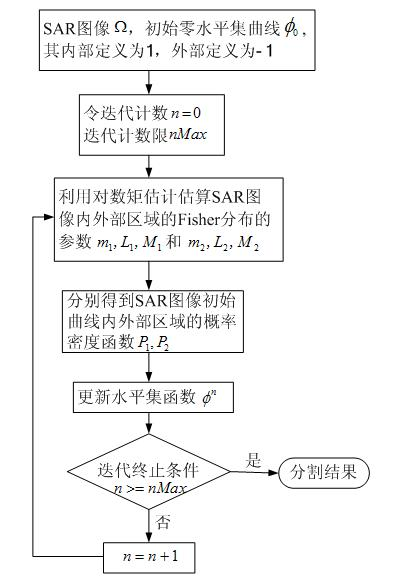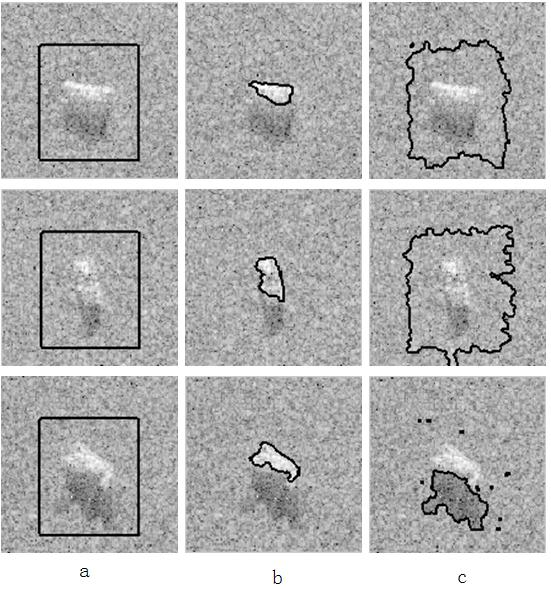Active contour synthetic aperture radar (SAR) image segmentation method based on Fisher distribution
An image segmentation and active contour technology, applied in the field of image processing, can solve the problems of slow segmentation, time-consuming re-initialization steps, insufficient development of coherent spots in SAR images, etc.
- Summary
- Abstract
- Description
- Claims
- Application Information
AI Technical Summary
Problems solved by technology
Method used
Image
Examples
Embodiment
[0045] Embodiment: a kind of active contour SAR image segmentation method based on Fisher distribution, comprises the following steps:
[0046] In the first step, the Fisher distribution is used to describe the statistical characteristics of the SAR image, and the energy functional function based on the Fisher distribution is established according to the regional competition model.
[0047] In order to better describe the SAR image under high-resolution conditions, the Fisher distribution is used to describe the statistical characteristics of the SAR image, assuming that the SAR image to be segmented It consists of two parts, which are the target area (foreground) and background area (background), assuming that the two regions obey the independent Fisher probability and statistics model, the following energy functional of SAR image segmentation can be established by the regional competition model, as Equation 1:
[0048] ,
[0049] in, is a closed curve with zero l...
PUM
 Login to View More
Login to View More Abstract
Description
Claims
Application Information
 Login to View More
Login to View More - R&D
- Intellectual Property
- Life Sciences
- Materials
- Tech Scout
- Unparalleled Data Quality
- Higher Quality Content
- 60% Fewer Hallucinations
Browse by: Latest US Patents, China's latest patents, Technical Efficacy Thesaurus, Application Domain, Technology Topic, Popular Technical Reports.
© 2025 PatSnap. All rights reserved.Legal|Privacy policy|Modern Slavery Act Transparency Statement|Sitemap|About US| Contact US: help@patsnap.com



